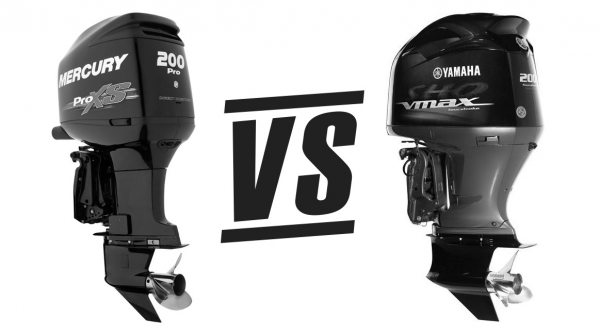TWO STROKE
Most of the two stroke outboards you are going to see for sale now a days are probably going to be a little bit more on older side. But don't let that discourage you. We sell two stroke from the 80's and they are still running like a work horse. These older two's used a carb to control the fuel and air, which isn't the most efficient when it comes to fuel consumption. Carbs can also have problems that are created by the ethanol that is in gas. One good thing to due with these carb motors is to disconnect the fuel line when you are done using them for the day and run them dry of fuel. This helps prevent any carb / fuel related service problems. Newer two strokes use a DFI system or Direct Fuel Injection system to deliver a more efficient and precise fuel / air mixture. These DFI systems result in performance, lower emissions, and better fuel efficiency.
Two strokes are the lighter motor out of the two because they lack certain mechanical parts that a four stroke has. The lack of parts such as camshafts, valves, belts and chains, ultimately makes it a lighter motor. Also less moving parts means less of a chance for something to break. On top of being lighter they also have better acceleration than a four does. So they tend to get out of the hole and accelerate faster than a comparable sized four stroke would. Lubrication with these motors is done through mixing it into the gas, which can be a pain to remember. Its easy to forget and if you just so happen to, you may be stranded with a blow motor. Ive seen it happen to a boat once already this year.
Lastly two strokes are going to be cheaper than a four stroke will be. This can be a big deciding factor if you are on a budget. Just remember that there is nothing wrong with running an older motor, especially if it was used in fresh water its whole life.
FOUR STROKE
For the most part everyone in the outboard industry has made the switch to four stroke motors due to strict emission laws. You actually cant find a brand new 15hp and under portable two stroke motor here in the US. They are all fours. Although manufacturers are still making two strokes in the higher horse powers and of course all of the ETEC outboards are two's, but thats another conversation. The intake and exhaust on a two stroke enters and exits through ports in the cylinder. Where a four stroke enters and exits the combustion chamber through intake and exhaust valves, which is a lot of the additional weight on a four.
Unlike a two stroke that needs oil added into the fuel, a four has a separate oil pan and filter. You will have to change the oil periodically on these motors just like as you would with your car. Depending on how much you use it, once a season should be fine here in Michigan. If you run the thing like you stole it though, you may want to do it twice a year. The newer technology on a four stroke not only supplies you with the performance you look for in a motor, but they also produce lower emissions and have outstanding fuel economy.
Here at Vans Sport Center we see a lot of pontoon boats and mid sized fishing boats upgrade to four stroke for two reasons. The first reason being that they sip fuel. The other is the fact that they are extremely quite compared to a two stroke. The days of talking, I mean yelling over the motor just to say something to the passenger at the front of the boat are a thing of the past. Heck, some of these four strokes you can hardly tell they are even running they are so quiet.
The cost of a four stroke is definitely going to be higher than a two because of the newer technology. They are also generally not as old as most of the two strokes you will see on the market if you are purchasing a used one. Like I said with the two strokes, if you are on a budget then a four stroke may not fit the bill. If you end up in this situation but you just have to have a four stroke, you will probably have to go down in horse power or age to find one that does fit your price range.
THE DECISION
So now you have got the basic gist of two and four stroke outboards but were does that leave you with your decision. It really comes down to what do you use your boat for and what kind of performance are you looking to get out of it. If your into cruising around the lake and socializing with friends, you may what to look at a four stroke for their quietness. Say you puddle jump for pan fish or your a duck hunter that already loads your boat down with tons of gear like myself. Then I would look at a two stroke because they are light weight and have that torque at the low end. Bass fisherman usually want that two stroke power to get them to their honey holes as fast as they can when they are tournament fishing. Say your big water fishing and have to go miles out to your spot, then you would probably lean towards a four stroke because they don't guzzle gas like a two would. You really have to look at your application of use to come to that final decision of what would work best for you, two or four stroke.


